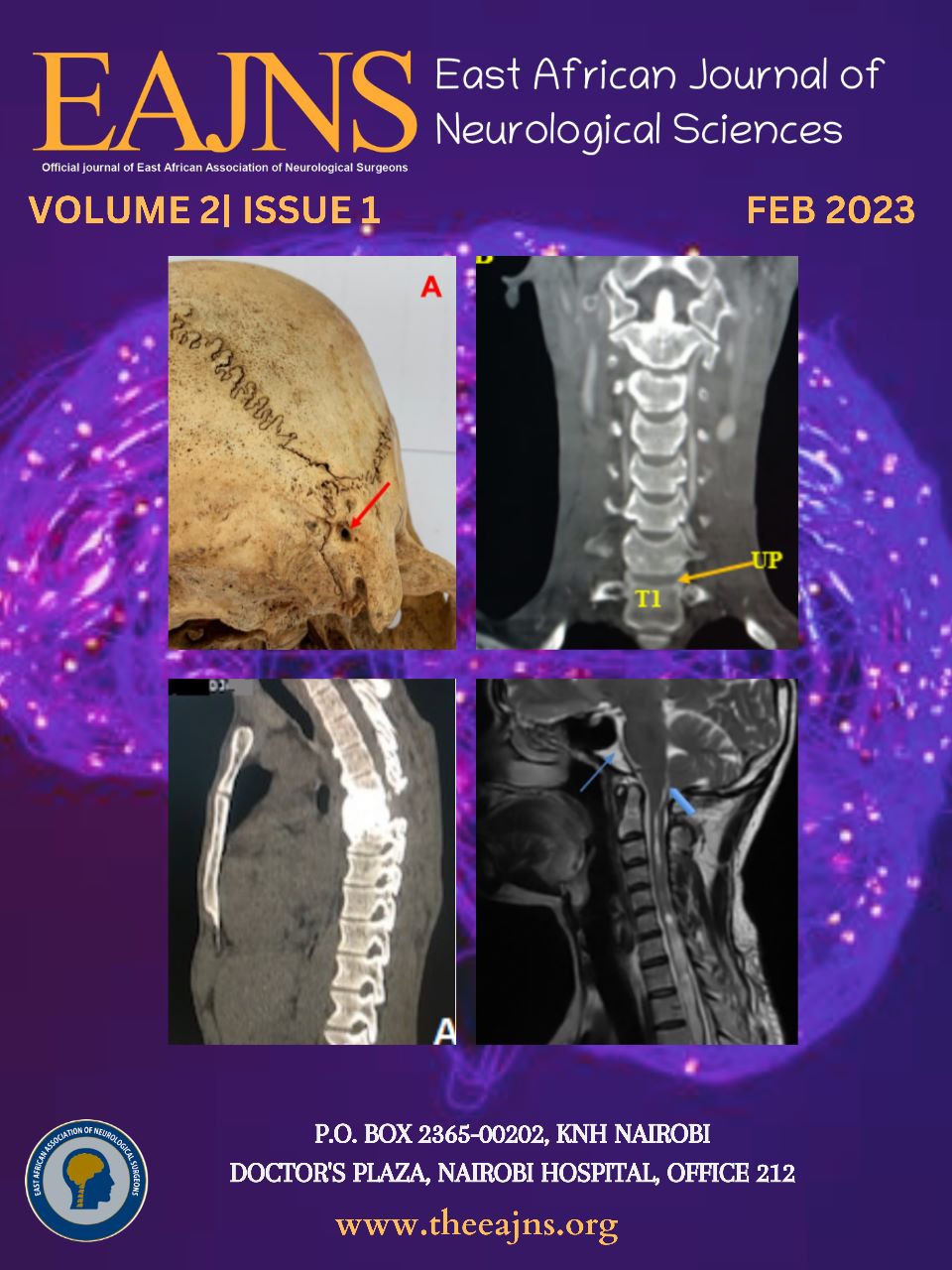Main Article Content
Assessment of the prognostic value of Helsinki Computer Tomography score in severe traumatic brain injury patients at Kenyatta National Hospital in Kenya
Abstract
Background: Head injury is usually considered a silent epidemic, conferring high mortality and disability worldwide. In the early assessment of patients with head injury, the computer tomography is of utmost importance and millions of Computed tomography (CT) scans are conducted yearly. These CT scans contain information that can be used to determine the patient's prognosis. The Helsinki computer tomography scoring classification was developed in 2014 as a tool for determining outcomes in traumatic brain injury patients. The Helsinki computer tomography score is the most recent addition to the arsenal of outcome predictors, having outperformed previous CT scoring systems in the European and Asian subcontinents. It will be necessary to test its ability to predict outcome in patients with severe traumatic brain injury in the African subcontinent.Objectives: To assess the prognostic value of the Helsinki Computer Tomography score among patients with severe traumatic brain injury (TBI). Study Design: Prospective observational study. Setting: The Emergency Department and Critical Care Unit, Kenyatta National Hospital. Subjects: Forty-two patients with severe TBI. Results: There was a higher male preponderance at 90% (n = 38). The mean age for patients with severe TBI was 33 years old, with an overall mortality rate of 64.3%. The patients with a Helsinki CT score of 4 had a mortality rate of 33.3%, while those with a Helsinki score of 11 had a mortality rate of 100%. Patients with contusions and intracerebral hematomas had mortality rate of 80%, while in acute subdural hematoma and extradural hematoma the mortality rates were 53.8% and 44.4% respectively. Helsinki CT score was significantly associated with GOS at 6 weeks (p=0.004) and death (p=0.009). The specificity, sensitivity and accuracy for Helsinki CT score for mortality were 88.9%, 53.3% and 71% respectively; and for an unfavorable outcome, these values were 81.8%, 55.6% and 69% respectively. The odds ratio for the Helsinki CT score to predict mortality and unfavorable outcome was 9.1(95% CI 1.9-44) and 5.6(95% CI 1.2-27.4) respectively. Conclusion: Severe TBI carries a high mortality and disability in Kenya. The initial Helsinki CT score is a significant predictor of outcome.







